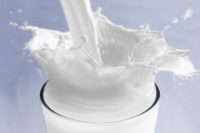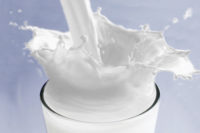A common sentiment among food industry experts is that consumers aren’t yet ready to hear about prebiotics. I respectfully disagree. As a nutrition therapist, I’ve noticed an increased interest in probiotics among my clients, which is the perfect opportunity to explain that certain fibers, called prebiotics, are needed for probiotics to survive and thrive. An understanding of nutrition’s bigger picture underscores the importance of a well-balanced diet.
Consumers need to know what prebiotics are, what they do, and where to find them. The 2013 Food & Health Survey found that only 34% of consumers believe prebiotics are associated with digestive health and only 27% believe they’re associated with immune health. And the majority of consumers don’t know which foods contain prebiotics. Product labeling and promotion could spark interest in prebiotics.
Prebiotics defined
Prebiotics are nondigestible dietary fibers which promote the growth and activity of specific probiotics in the gut, thereby conferring benefits to the host. In order for a food ingredient to be classified as a prebiotic, proof must exist that it’s not broken down in the stomach or absorbed by the GI tract, that it’s fermented by the GI microflora, and that it selectively stimulates the growth and or activity of intestinal bacteria associated with health and wellbeing. The dietary fibers that meet all aspects of the definition of prebiotics are inulin, oligofructose, lactulose and resistant starch.
Strong evidence supports the ability of certain prebiotics to reduce gastrointestinal infection and inflammation or to increase the bioavailability and uptake of calcium.
Joe O’Neill, president and general manager of Beneo Inc., Morris Plains, N.J., a supplier of prebiotic fiber, said the company communicates and markets the research-based nutritional benefits of its inulin and oligofructose ingredients. Several years ago, the company’s Synergy 1 (inulin) was utilized in a human study that found inulin enhanced calcium absorption. A recent review of the study’s results indicates that inulin also boosts bone mineral density.
“This structure/function claim can be used,” noted O’Neill. “Dairy processors can formulate with prebiotics and make claims such as ‘Helps build strong bones.’”
The company’s inulin and oligofructose ingredients are added to liquid and dry infant formula to improve infants’ microbiota balance; and to dairy products such as yogurt, cultured fermented milk, low-fat milk and low-fat ice cream for a variety of technical purposes including partial sweetness, sugar reduction or replacement, textural improvement and as a fat mimetic.
Research has shown that another prebiotic ingredient, Promitor soluble corn fiber from Tate & Lyle, Hoffman Estates, Ill., also improves the absorption of calcium when added to a food or beverage. According to Andy Hoffman, the company’s director of health and wellness product development, unlike inulin, Promitor enables significant fiber enrichment without sacrificing digestive tolerance. The ingredient is available in dry, liquid or agglomerated versions and enables manufacturers to reduce fat, calories and sugar by rebalancing bulk, viscosity and mouthfeel.
Products with prebiotics
Prebiotics in whole-food form are also being added to dairy products. Powerful Yogurt created a new line of low-fat Greek yogurts with added grains (called Powerful Yogurt PLUS+) which includes a product with oats. Research shows that beta-glucan from oats has prebiotic potential.
“Yogurt is the perfect medium for additional nutrition,” said Carlos Ramirez, founder and CEO, Powerful Yogurt, Miami. “We started with the grains and seeds that have health benefits many people are familiar with. Powerful Yogurt PLUS+ contains a combination of prebiotics and seven probiotics; however, promoting prebiotics is hard because [the concept] doesn’t yet have consumer backing.” Another dairy product that incorporates oats is Kefir with Oats by Lifeway Foods (see page 32).
The prebiotic effect of several fibers is substantiated, and there’s sound science to support a few structure/function claims, so it’s appropriate for food manufacturers to communicate this information to consumers and include appropriate structure/function claims on product labels. If the food industry holds off, waiting for health professionals or the mass media to educate consumers about prebiotics, it may be a long wait.
Claims heard round the world: products with prebiotics
- “Helps increase calcium absorption and bone strength,” Anlene Milk Powder (with FOS inulin), Asia
- “Better digestion,” Nestle Bliss low-fat yogurt drink (with inulin), Asia
- “Low glycemic response,” Alpura DBT milk (with fiber), Mexico
Source: Innova




